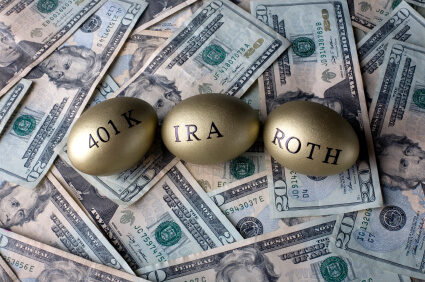The start of a new year often inspires reflections on the past, with renewed effort to apply any lessons we've learned to try to anticipate

Inherit the Win
Typically, a regular IRA is not the most efficient asset to use for inter-generational transfers of wealth. If the IRA and estate are large enough, both estate and income taxes will apply. As a result, heirs can end up with only about 20% of the actual value of an IRA. However, if estate taxes are due they can be covered by funds outside of the IRA itself in order to keep it intact. Spouses get special and more favorable treatment if they inherit an IRA, but this article is about passing wealth to the next generation. Of course, everyone’s situation is unique and requires close individual analysis and careful planning, but given current circumstances it could be that an IRA is often better left to charity, or handed down to the next generation via a Roth IRA conversion. Many people do not have to worry about estate taxes because their overall estate is small enough to be covered by the lifetime gift and bequest exemption, which is currently $5,120,000 per person. But this amount is scheduled to drop back to $1 million after December 31 of this year, which would likely affect more people. Still, many people need to rely on their IRA in their lifetime to provide retirement income. Some may also need to take higher withdrawals than the required minimum distribution amount in order to cover living expenses, or start taking them sooner than the age of 70 ½ at which time such withdrawals must begin.
For larger estates, though, the IRA counts toward the overall asset base considered for estate tax purposes. For the past few decades, the estate tax rate has hovered around 50 percent. This year, however, the rate is only 35 percent but this is currently scheduled to increase after December 31 to 55 percent. Because of their tax-deferred status there is no step-up in cost basis for any holdings in an IRA, unlike other forms of ownership that can have their tax basis adjusted and even triggered for all community property assets at the death of the first spouse. Additionally, inherited IRAs—except for those involving spouses—need to begin withdrawals based on the beneficiary’s life expectancy, but without proper planning this could result in full depletion in just 5 years after the death of the owner. Whether inherited or not, withdrawals from regular IRAs are taxable at ordinary income tax rates and not at capital gains rates.
Ordinary income taxes also apply to any amount converted to a Roth IRA (less any non-deductible basis in the IRA itself). It is optimal to pay the resultant taxes from funds outside of the IRA in order to maximize the amount that will then grow tax-free for the ultimate beneficiaries. Converting sooner rather than later could be worthwhile if one expects either underlying asset values to appreciate significantly and/or future ordinary income tax rates to rise. Higher income tax rates would reduce the net amount received on mandatory age-based withdrawals that must be taken from regular IRAs. However, Roth IRAs are not subject to mandatory withdrawals during the lifetime of the owner. Once inherited, Roth IRA beneficiaries are required to take distributions over the course of their lifetime, but these are completely tax-free—unlike distributions from regular IRAs. Consequently, Roth IRAs can grow more during the owner’s lifetime, and young Roth IRA beneficiaries are likely to enjoy many years of fully tax-free income. In addition, income taxes paid to convert a regular IRA to a Roth IRA reduce the size of the overall estate at the time of payment and thus can reduce the ultimate estate tax effect.
And yet, many people end up taxed at lower income brackets later in life, and thus it might not make sense to convert to a Roth IRA to avoid higher future income tax rates; but this situation is often less likely to occur for wealthier people with larger estates and it does not alter the estate tax impact for those trying to transfer wealth. In addition, some IRA owners with larger estates might simply choose to draw down their IRA accounts more aggressively during their lifetime and pass other assets to heirs. Finally, for IRA owners who are charitably inclined, the best decision might be to leave all or part of a regular IRA to charity as a direct bequest. Because of its qualified status as the beneficiary, the charity avoids any taxes and will be able to receive the full value of the IRA at the date of death of the donor. Only a charity can get this benefit, so if there are philanthropic plans within the family, this might be the best use of an IRA.
Articles and Commentary
Information provided in written articles are for informational purposes only and should not be considered investment advice. There is a risk of loss from investments in securities, including the risk of loss of principal. The information contained herein reflects Sand Hill Global Advisors' (“SHGA”) views as of the date of publication. Such views are subject to change at any time without notice due to changes in market or economic conditions and may not necessarily come to pass. SHGA does not provide tax or legal advice. To the extent that any material herein concerns tax or legal matters, such information is not intended to be solely relied upon nor used for the purpose of making tax and/or legal decisions without first seeking independent advice from a tax and/or legal professional. SHGA has obtained the information provided herein from various third party sources believed to be reliable but such information is not guaranteed. Certain links in this site connect to other websites maintained by third parties over whom SHGA has no control. SHGA makes no representations as to the accuracy or any other aspect of information contained in other Web Sites. Any forward looking statements or forecasts are based on assumptions and actual results are expected to vary from any such statements or forecasts. No reliance should be placed on any such statements or forecasts when making any investment decision. SHGA is not responsible for the consequences of any decisions or actions taken as a result of information provided in this presentation and does not warrant or guarantee the accuracy or completeness of this information. No part of this material may be (i) copied, photocopied, or duplicated in any form, by any means, or (ii) redistributed without the prior written consent of SHGA.
Video Presentations
All video presentations discuss certain investment products and/or securities and are being provided for informational purposes only, and should not be considered, and is not, investment, financial planning, tax or legal advice; nor is it a recommendation to buy or sell any securities. Investing in securities involves varying degrees of risk, and there can be no assurance that any specific investment will be profitable or suitable for a particular client’s financial situation or risk tolerance. Past performance is not a guarantee of future returns. Individual performance results will vary. The opinions expressed in the video reflect Sand Hill Global Advisor’s (“SHGA”) or Brenda Vingiello’s (as applicable) views as of the date of the video. Such views are subject to change at any point without notice. Any comments, opinions, or recommendations made by any host or other guest not affiliated with SHGA in this video do not necessarily reflect the views of SHGA, and non-SHGA persons appearing in this video do not fall under the supervisory purview of SHGA. You should not treat any opinion expressed by SHGA or Ms. Vingiello as a specific inducement to make a particular investment or follow a particular strategy, but only as an expression of general opinion. Nothing presented herein is or is intended to constitute investment advice, and no investment decision should be made based solely on any information provided on this video. There is a risk of loss from an investment in securities, including the risk of loss of principal. Neither SHGA nor Ms. Vingiello guarantees any specific outcome or profit. Any forward-looking statements or forecasts contained in the video are based on assumptions and actual results may vary from any such statements or forecasts. SHGA or one of its employees may have a position in the securities discussed and may purchase or sell such securities from time to time. Some of the information in this video has been obtained from third party sources. While SHGA believes such third-party information is reliable, SHGA does not guarantee its accuracy, timeliness or completeness. SHGA encourages you to consult with a professional financial advisor prior to making any investment decision.
Other Posts By This Author
- – Exchange Ideas
- – College Bound — Hip, HIPAA, Hooray
- – Fiscal Sponsorship for Charity
- – Risky Business
Related Posts









